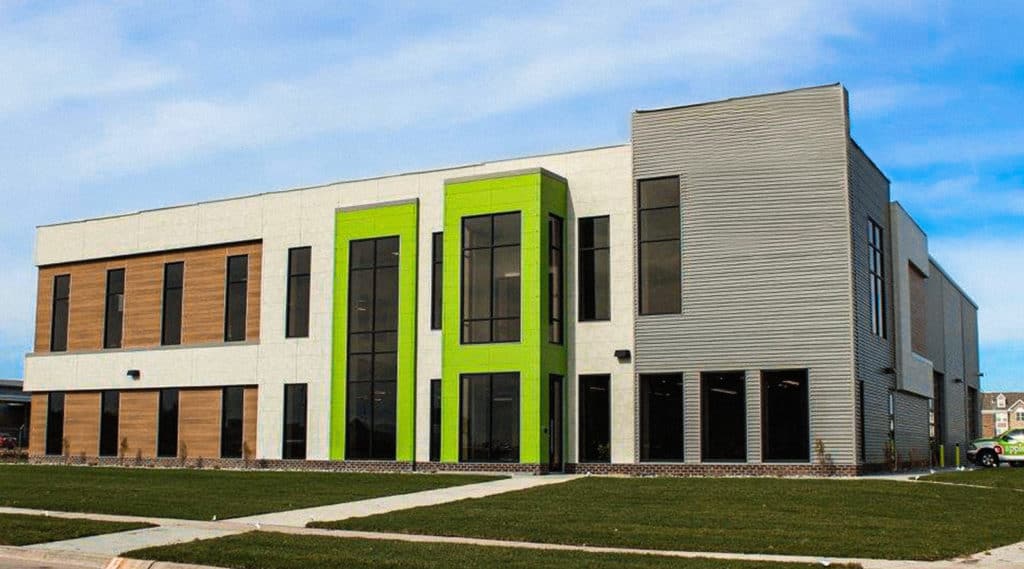
ProEst + Procore integration creates a seamless project workflow.
From the very beginning, Ironhide Construction has gone all-in on metal building construction, promoting its time-and-money saving benefits to a diverse Midwestern clientele. Before moving to the ProEst platform in 2018, Ironhide had relied on Excel spread- sheets for project estimating and briefly before that, rudimentary paper and pencil calculations. Although Ironhide estimators had refined Excel to a workable degree, as the company grew and they acquired more knowledge of best practices, and needs for improved consistency, Corporate Officer & President Troy Bridgford recognized the need for more advance estimating capabilities. It was then that the company began the search for an online solution that could handle increasing estimate volume as well as integrate with their Procore construction management software. The ultimate goal for Ironhide was a seamless flow of project data from ProEst to Procore to Acumatica, the accounting solution they had implemented in 2019.

According to Bridgford, Ironhide’s project portfolio is fairly evenly divided: 25% of the company’s work is subcontracted from larger GCs, 25% is “hard bid,” 25% is negotiated, and 25% is repeat projects from clients who call them back to do further construction work. ProEst has been especially useful, says Bridgford, for their negotiated projects, giving them a tool that offers visibility into bottom-line numbers. “After we put our estimates together, I just bring my laptop with me to the meetings and we’ll run through all the numbers in live action,” he said. “We go all the way down to the summary page so they know what our overhead margin is as well as our profit margin expectations.“
ProEst has been really nice on the negotiated side of our business."
The principals of Ironhide Construction pride themselves on their ability to create and maintain positive, long-term client relationships grounded in transparency—and they consider end-to-end accountability for every project they undertake a key factor in their success. As with most contractors, for Ironhide, that begins with detailed cost breakdowns, projected profit margins and other key metrics that the team readily shares with their clients. Ironhide’s “open book” policy is a selling point for the company, contributing to a solid reputation for fair practices and people-centric policies; given the high visibility of every detail in their bids, the accuracy of estimates prepared with ProEst helps protect the company’s bottom line. “We thrive on being transparent,” said Bridgford. “It tends to serve us very well.”
We thrive on being transparent; it’s what builds our core values of Trust and Integrity."

Once their Procore construction management solution was in place, Ironhide had a new ability to track and manage the details of each construction project in real-time, giving field and office teams the access they needed to view, share and modify information as the project evolved without the inconvenience and bottlenecks that can result from data that doesn’t reside online. Because their Procore solution was in the cloud, it made sense for the company to choose the web-based ProEst platform for project estimating, digital takeoffs and preconstruction management. Acumatica software—for managing vital back-end accounting tasks as projects progressed was selected for its compatibility with both ProEst and Procore.
ProEst and Procore have out performed our expectations."
How has Ironhide’s integration strategy improved their workflow? Bridgford explained it this way: “For us, on the integration side, it’s been wonderful. After the project is awarded, often times you go back through and clean it up, to replace numbers you had to estimate internally, because you might not have had full coverage with subs or suppliers. You continue to refine the estimate, and when it’s completely cleaned up, we hit “awarded and upload” and it completes the migration over to Procore.” The entire migration process, says Bridgford, typically takes only a few clicks.
According to Senior Estimator Jesse Millspaugh, efficiency gets a boost, too, adding that “Ultimately, integration cuts down on a lot of the double-duty, double entry of data and information. By streamlining the flow from one program to the next, it saves us a lot of valuable time.” For a company that expects its growth trajectory to continue, time is money, in all of the right ways.
By streamlining the [data] flow from one program to the next, it saves us a lot of valuable time."